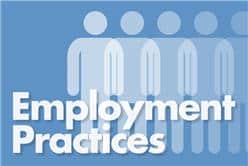Employees miss work for myriad reasons, but what happens when an employee is a no-show and has not communicated with the employer about his or her absence? There are no telephone calls, emails or texts — the employee has made no contact of any kind with the employer. While this can be a frustrating situation, it is not a “free ticket” to terminating the employee.
Job abandonment occurs when an employee does not intend to return to the job and has not notified the employer of his or her intention to quit. But because job abandonment has no legal definition, it is helpful if job abandonment is defined in a practice policy. Neither California nor federal law regulates the amount of time an employer must hold a job open for an employee who neither appears for work nor calls in to explain their absence.
“As the employer, your actions are controlled only by your practice’s policy,” says Michelle Corbo, HR practice analyst with CDA Practice Support.
Ideally, every employer has an employee handbook that contains clear attendance and communication policy expectations. And ideally, employees will have acknowledged these expectations and will follow them when the need to be absent from work arises. This generally allows employers to adjust schedules to accommodate the absence.
Employers should develop a policy that clearly states the consequences of no-call, no-show behavior by defining how many days of absence will be considered job abandonment. In California, three no-call, no-show days are commonly considered job abandonment. But whatever the number of days established by practice policy, the employer has a responsibility to try to make contact with the absent employee and to document all attempts to do so, as there are situations, described below, that may prevent employees from following practice policy.
Why do employees abandon their jobs?
Common reasons for job abandonment include the employee is too embarrassed or afraid to resign in person, the employee has received a better offer with another employer and the employee is unable to meet the job requirements.
However, job abandonment and voluntary termination of employment can also occur when an employee is unaware of the employer’s absenteeism policy. The employee may not even fully realize how their absence from work will affect their employer. “Give your employee the benefit of the doubt,” Corbo says.
And occasionally, but importantly, medical situations, incarceration, natural disasters and other situations of personal crisis do occur that can prevent an employee from making timely contact. Prior to terminating employment, employers should consider that the employee may be protected under the law by, for example, paid sick leave, protected family or medical leave (FMLA/CFRA for employers of 50 or more), school or child care leave or victims leave.
While the employee certainly could be disciplined for failure to follow practice policies on attendance and communication, termination should be a last resort in the above situations.
As a best practice, employers should indicate in their employee absence/job abandonment policy that exceptions may be made for emergencies. Communication protocols should be established as part of this policy. A well-defined communication policy includes who to contact and what methods of contact are acceptable, e.g., emails, texts or telephone calls. Employers should keep up-to-date emergency contact information in the employee’s personnel record and should follow practice attendance, discipline and termination policies consistently. As part of any new policy or handbook update, employees should be required to read and acknowledge the job abandonment policy.
Some absences are protected by law, and there are no one-size-fits-all answers to situations that arise. It is advisable to seek advice from an employment attorney prior to initiating any employee termination.
CDA Practice Support has several resources to assist employers with developing practice policies and managing employees, including a Sample Employee Manual, Termination Checklist and Practice Policy Revision: Employee Acknowledgement Template.
For the resources cited in this article, visit the Resource Library. Or submit an employment related question via the “Ask an Expert” link to receive a response from HR Practice Analyst Michelle Corbo within one business day.

